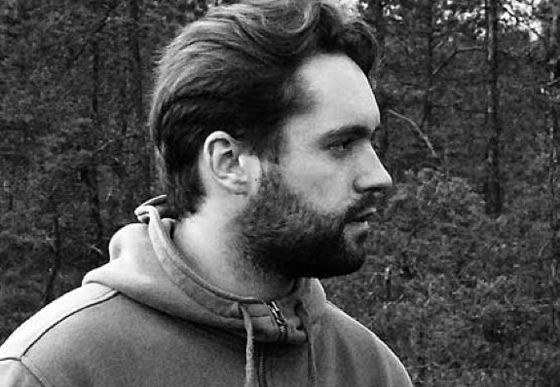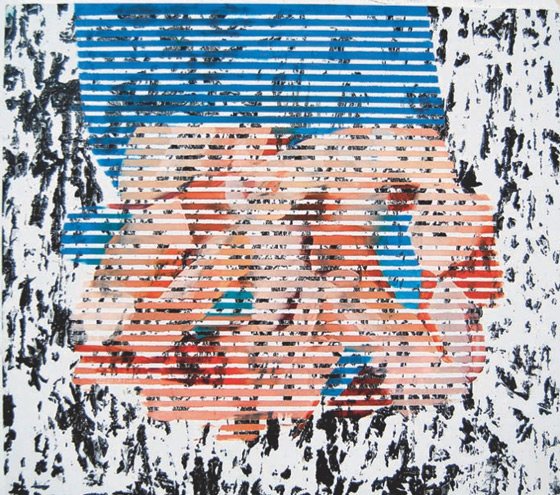|
|
| Edgars Soprāns Elīna Pastare, Art Academy of Latvia | |
| Edgars Soprāns (born 1988) is a student in the Painting Depart ment at the Art Academy of Latvia. His painting is character ized by a deeply personal absorption in what’s going on in the environmental and natural processes around people. Being at the beginning of his creative activity, Edgars has taken a deeper interest in landscape painting which is evidenced by the Ziema (‘Winter’) exhibition created in 2012 together with other stu dents from the academy. The main goal of the project was to bring to the fore landscape painting, focussing on it not only in summer outdoor painting sessions, but also at other times of the year, in this case winter. Edgars’ landscapes, which have still kept the naturalistic interpretation of form characteristic of student assignments, were painted by choosing visually laconic motifs from nature and bringing them to life with the richness of the cool grey tones that can be observed at the coldest time of the year. But a real experience was created by the remnants left behind by harsh weather, seen in the paintings, which just like damage done by war gave these study works a lyrically harsh character, at the same time showing Edgars’ desire to achieve his goal in the set tasks. | |
 Edgars Soprāns. 2012 Photo from the private archive of Edgars Soprāns | |
| As logical evidence of a gradual desire to stand apart from traditional landscape painting and to seek new forms of expres sion, one could mention the “atavism” solo exhibition by Edgars Soprāns which took place at the Art Academy of Latvia space within the framework of the Mana telpa (‘My Space’) series of small exhibitions. One work exhibited at the exposition with the same title, later also submitted to the SEB Contest in Painting of 2012 organized by the SEB bank, already embodied a completely different crosssection of the expressions of nature. In this work Edgars dissociated himself from a naturalistic portrayal of na ture with a monochrome, decoratively stylized forest landscape. The painting is markedly graphic, and a central role in it is played by the contrast between the linear rhythm of the slender and straight tree trunks, and the fine graphic netting of their crowns. The author himself emphasizes that by atavism he meant the desire to return to older types of perception, behaviour and re action, cultivating the real and unchanging in its overall essence, in the visual experience encapsulating this in the image’s techni cal and structural simplicity. Rejecting the traditional elements which make up a landscape, the artist shows an ability char acteristic only of him to create a complete artistic reality with distinctly laconic means of expression, without allowing pro fessional flirtation with the technical possibilities of painting to become purposeless. A study exchange visit to the United Kingdom, where Edgars spent six months studying at Manchester Metropolitan Univers ity, marked a turning point in the young artist’s creative output and creative searches. The unaccustomed work and living condi tions stimulated a change in the range of motifs used. Moving away from realistic portrayals of nature, Edgars turned to the development of compositions that balance on the border be tween the everyday recognizable and the completely abstract. One of the works created at the beginning of his studies abroad reveals a play on contrasts which is still important to the artist, but now carried out in the framework of nonsubjective paint ing. The black and white background with irregular streams of paint contrasts with the painting organized in linear strips, where the warm and cool nuances of colouring used make the viewer sense an almost physical heat. This dissonance creates associations with the damaged digital image aesthetic used in socalled Glitch Art: the colours flooding out into straight lines on a black and white background remind one of the frozen frame of a video fragment, which on the screen of some technical equipment has become hopelessly lost in the endless variations of binary code. But the difference lies in Edgars’ ability to impart artistically fine nuances to what has been portrayed. The visual reference to formal techniques of classical painting when modelling the human body makes one perceive the work as a scheme for an advanced control mechanism, where something alive and breathing has been encaged within the framework of technological reality. | |
 Edgards Soprāns. Untitled. Oil on canvas. 60x70 cm. 2012 Publicity photos Courtesy of the artist | |
| In his latest works, preserving a consummate, uniquely laconic formal language of expression, the young painter has focussed on the analysis of almost ephemeral processes, showing a completely different level of relationship between self and the art work. The painting Pelde (‘Swim’) is Edgars’ reflection on global natural processes, which in our naivety we sometimes perceive as something simple and selfevident. To a certain degree, it is selfirony about how much humans want to place the world, with all its unfathomable causal relationships, into a framework of schematic tables or diagrams. The greater part of the paint ing’s plane is dominated by a reproduction of a peculiar spatial object – a box, which serves as a visual metaphor for how compactly and primi tively our perception of the world can be formulated. The form of the ob ject associates itself with the squiggles created by a seismograph, as well as the various tables with crosssections of the Earth’s crust which had already formed our views about geological processes in our schooldays. As is customary, the artist does not construct a specific environment or space, and in the context of the work, the peculiar model consequently gains a monumental, eternal character. In the work, the linear drawing is supplemented by paint spread in a number of layers, covering the en tire plane of the painting and creating an artistically refined interplay of grey tones. The form of the object portrayed seemingly dissolves into the paint texture, and to the viewer it seems distant and unattainable. The ability to create such an emotionally rich and manysided image with limited means of expression is commendable, and creates indirect re ferences to the creative work of the Rumanian painter, Victor Man, whose creative development Edgars has chosen to follow. The artists are united in their tendency to work in restrainedly limited colour and to reflect captured moods, offering the viewer nothing but fine, subdued clues which the viewer has to unravel for him or herself. In searching for a suitable formal expression for his conceptual ideas, Edgars actively experiments with the technical possibilities of oil painting. Responsibly, without allowing the experiment to take over the structure of the painting, he puts the paint on layer over layer, creat ing unusual colour solutions, in the layering process trying out auxiliary materials, for example, adhesive tape,. Experiments among young art ists are nothing unusual, quite the opposite – often this is the sign of a promising talent. Edgars’ ability to avoid drifting into formal searches as an end in itself is, however, commendable, as even if the concept of the painting is reduced to visually expressive nuances of colour, the artist doesn’t allow the characteristic of the work to be lost in them. Up till now, in the paintings by Edgars Soprāns one can notice a diversity of both content and style, evidence of active artistic explora tion. In the artist’s created space which exists beyond the borders of time, new, previously unutilized spatial objects are appearing, yet in his paintings he maintains the tendency to bring to life existential and am biguous moods in clean and comparatively simple forms of expression – which leads one to think that this aspect will be a constant recurring feature in Edgars Soprāns’ future works as well. Translation into English: Uldis Brūns | |
| go back | |







